
Come and join us on an exciting weekend getaway to Belgrade
Belgrade has gained recognition as the thriving hub of European nightlife and parties, particularly popular among young tourists. However, it would be a missed opportunity to overlook the other remarkable aspects that the Serbian capital has to offer.
During the daylight hours, there are countless activities and attractions to explore in Belgrade, and if you’re up for it, the city’s vibrant nightlife is definitely worth experiencing as well.
With proper organization and advance planning, you can easily cover everything mentioned here in a weekend trip. Belgrade, despite its moderate size, offers numerous sightseeing opportunities within walking distance. Furthermore, many visitors even consider Belgrade to be one of the most budget-friendly destinations for a city break in Europe.
Tip: Consider the climate – late spring and early autumn offer ideal conditions for visiting. Winters can be quite cold, with some days even reaching freezing temperatures, while summers can be scorching, with temperatures exceeding 30 degrees Celsius. So, if you’re looking to enjoy a city break filled with walking and savoring the city’s many outdoor restaurants and cafés, when is the best time to go? According to locals, late spring (April and May) and early autumn (September and October) are the prime months. In fact, there’s even a popular love song called “April in Belgrade,” suggesting that this month is perfect for romantic strolls and whispered conversations on park benches.
Day 1: Begin your journey at Kalemegdan Park
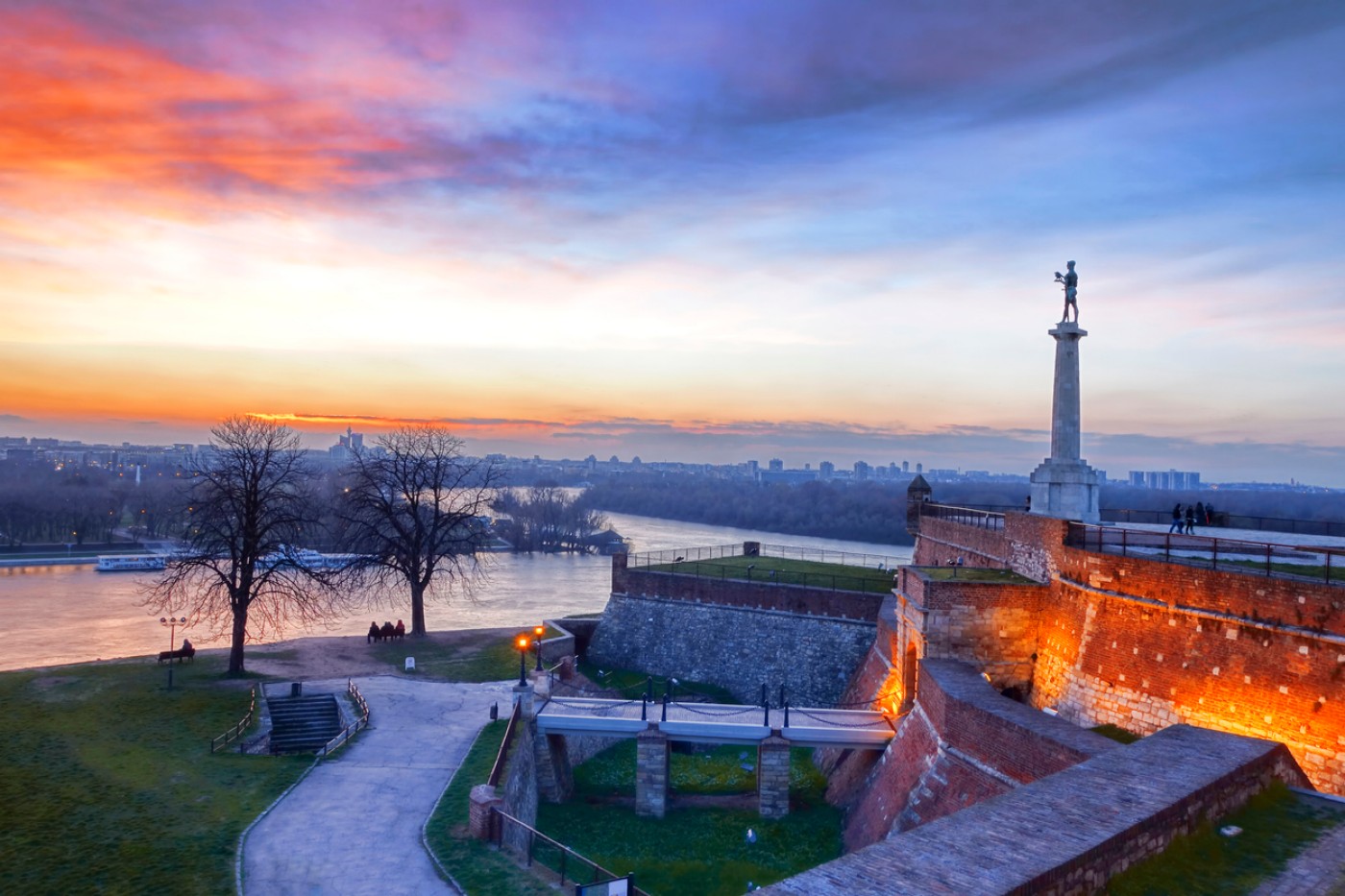
When it comes to parks and leisurely strolls, you can’t miss Belgrade’s expansive green oasis situated in the heart of the city, where the Danube and Sava rivers meet. Kalemegdan Park, with its breathtaking views, serves as the perfect starting point for your first day of exploration. Within the park grounds, you’ll find the renowned Belgrade Fortress (www.beogradskatvrdjava.co.rs), a zoo, museums, churches, restaurants, and ancient fortifications that have withstood the test of time. For a unique experience, history and archaeology enthusiasts shouldn’t miss the underground tour, highly recommended by both locals and visitors alike (https://beogradispodbeograda.com).
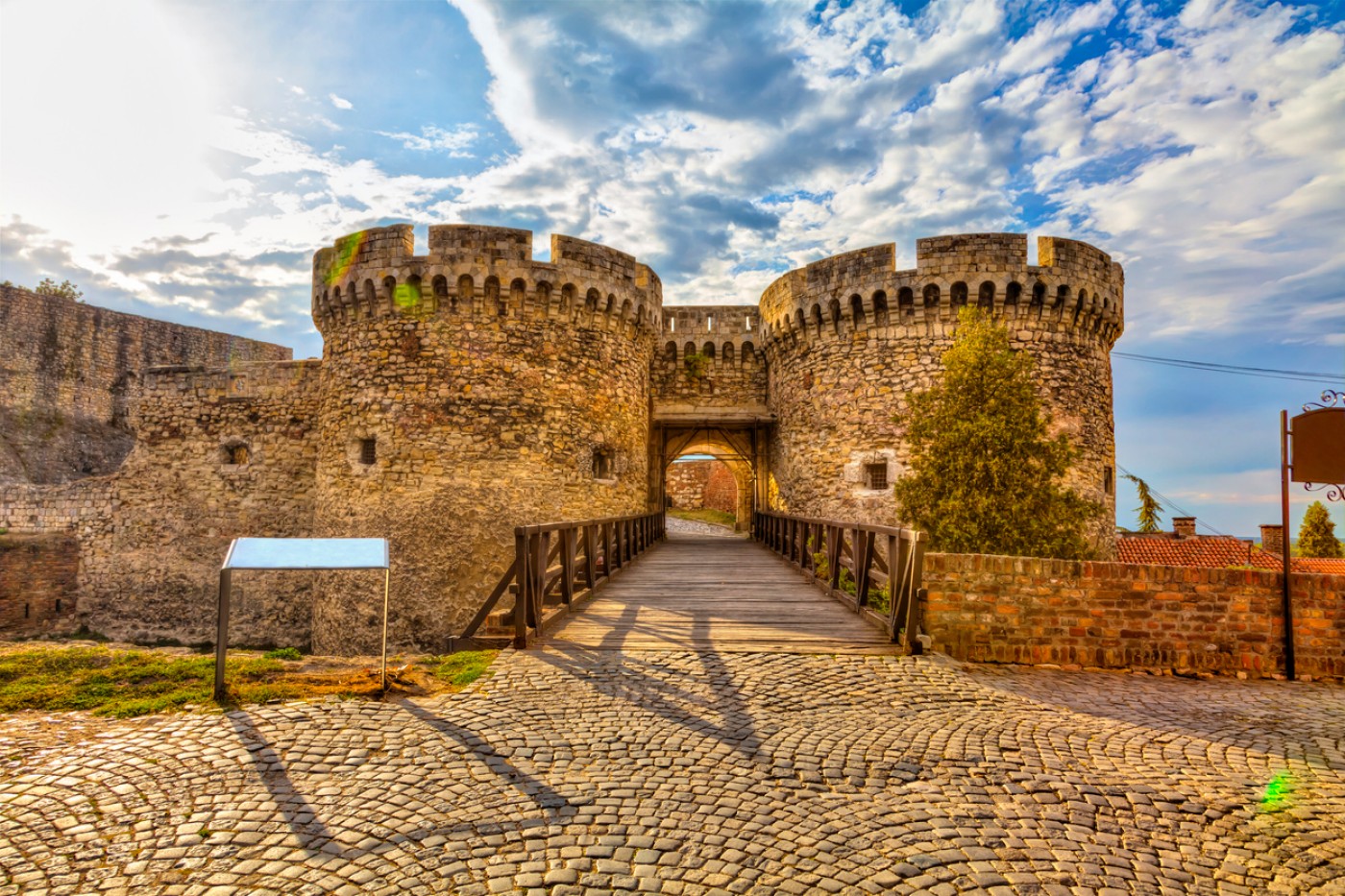
Belgrade is a haven for history enthusiasts
Belgrade, an ideal destination for history enthusiasts, boasts a fascinating past as one of Europe’s oldest continuously inhabited cities. Even during a short visit or a weekend getaway, the city’s rich historical tapestry is evident at every turn. One intriguing aspect is the presence of the Vinča culture, one of Europe’s most significant prehistoric cultures, which flourished in the greater Belgrade area around the 6th millennium BC.
While delving into Belgrade’s history warrants an article of its own, let’s focus on our weekend trip recommendations. After exploring Kalemegdan, whether as a history buff or a nature lover seeking serene green spaces and breathtaking sunsets, make your way to Knez Mihailova Street. This bustling pedestrian area is brimming with shops, restaurants, and cafes, allowing you to soak up the vibrant energy and ambiance of the Serbian capital. Follow the street to the heart of the city, Republic Square, which serves as a popular gathering spot for locals. Adorned with a grand statue of Prince Mihailo on horseback, crafted by the renowned Venetian sculptor Enrico Pazzi in 1882, the square offers a glimpse into Belgrade’s past. You can also admire the exquisite Austro-Hungarian architecture of the 19th century at the Serbian National Museum and the National Theatre, both located in the square.
Indulge your artistic soul at the National Museum
The National Museum in Belgrade, boasting a stunning neo-Renaissance facade adorned with vibrant polychrome ornaments, stands as the largest and oldest museum in Serbia. With its monumental size and extensive collections, this museum is a treasure trove of history and art. Presently, it houses 34 captivating collections encompassing archaeology, numismatics, art, and history.
Art enthusiasts will be enthralled by the diverse art collection showcased at the museum. From Serbian medieval art to masterpieces from French, Dutch, Flemish, Italian, Russian, German, Japanese, Chinese, English, Spanish, Hungarian, Romanian, Bulgarian, Yugoslav, and miscellaneous artists, the museum holds a rich tapestry of artistic expression. With over 16,000 paintings, graphics, drawings, icons, prints, and more than 900 sculptures, visitors are treated to a remarkable visual journey.
At the National Museum, you can appreciate the works of enowned Serbian and Yugoslav artists, and also admirethe creations of esteemed international artists such as Matisse, Picasso, Renoir, Degas, Cézanne, Raphael, Titian, Tintoretto, Modigliani, Mondrian, Bosch, van Dyck, Brueghel, Monet, Signac, Chagall, Kandinsky, Dürer, Klimt, El Greco, Picasso, and many others. For art lovers, a visit to the National Museum is an absolute must, offering a profound experience of artistic excellence and cultural heritage. For more information about the National Museum, please visit their website: www.narodnimuzej.rs.
Embrace Serbian hospitality: delight in the kafana experience
Just a short stroll from the Republic Square, you’ll find the vibrant and diverse neighborhood of Skadarlija. Known as the Bohemian quarter, it exudes a charm reminiscent of Parisian Montmartre. Originally a haven for artists employed by the National Theatre in the late 19th century, Skadarlija has evolved into a hotspot for nightlife and kafanas – traditional Serbian restaurants that come alive with live music, both in the evenings and sometimes even during the day.
Unlike typical tourist destinations found in other capitals, Skadarlija is a beloved spot among locals as well. If you truly want to experience how Serbians enjoy kafana, make sure to visit one of the many establishments in Skadarlija. Indulge in authentic Serbian cuisine, revel in the lively atmosphere, and don’t forget to show your appreciation to the talented musicians by leaving a generous tip if they serenade you at your table. It’s an experience that captures the essence of Serbian culture and guarantees an unforgettable time in Skadarlija.
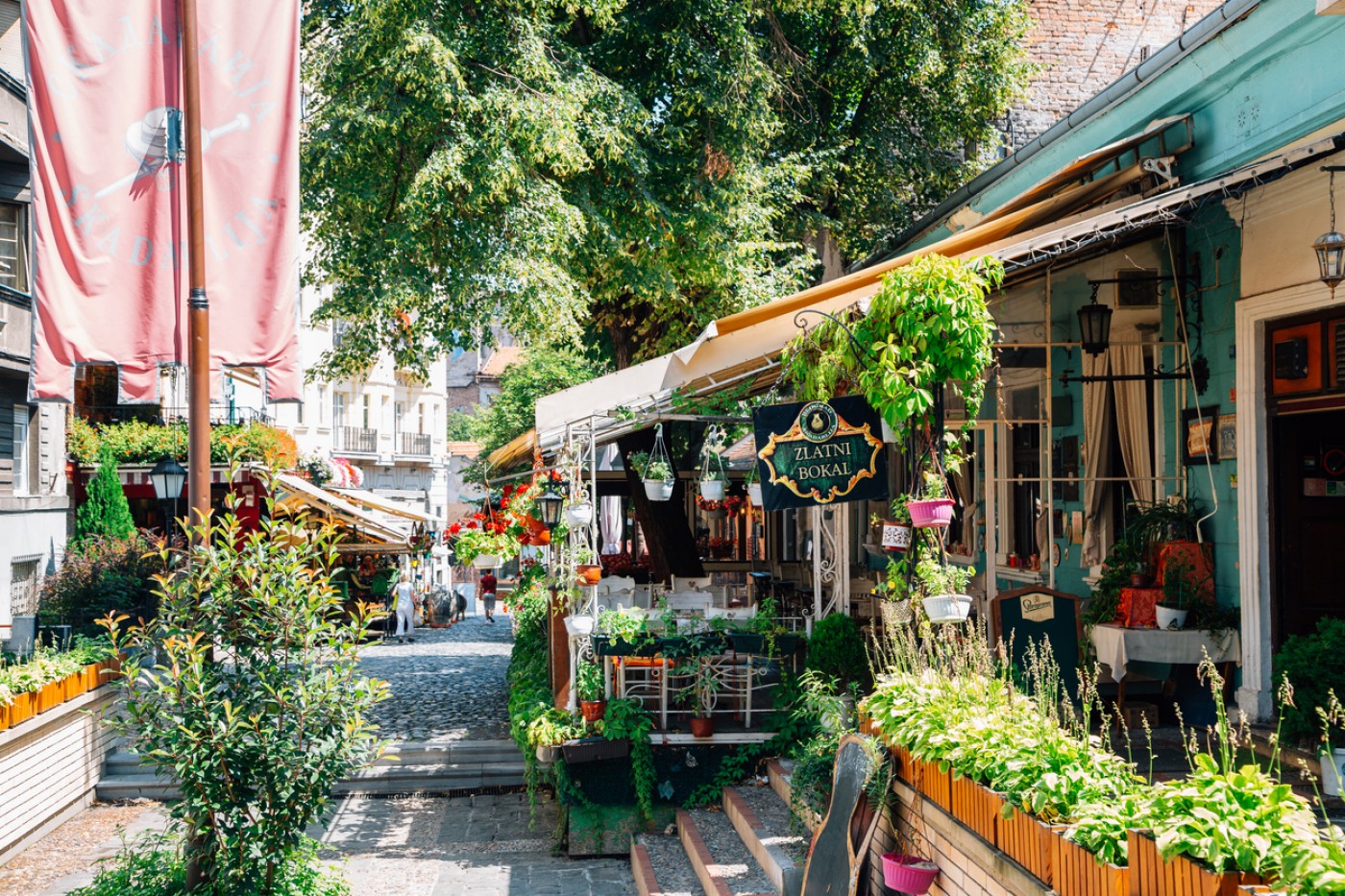
Having enjoyed a delightful meal and sipped on the renowned Serbian rakija in Skadarlija, it’s time to venture into the captivating neighborhood of Dorćol in Belgrade’s old town. With a rich history spanning centuries, Dorćol boasts an enchanting blend of architectural styles that reflect its diverse past. As you stroll along its streets, you’ll witness a fascinating juxtaposition of structures—a splendid example of classic Austro-Hungarian architecture standing shoulder-to-shoulder with a functionalist brutalist apartment block, while an Ottoman-era house proudly stands across the way.
A well-kept secret shared by the locals is the residence of Belgrade’s oldest house, located at number 10 Cara Dušana Street in Dorćol. Although it’s not accessible to the public, you can still catch a glimpse of its historic charm from the outside as you pass by.
Dorćol beckons you to explore its intriguing blend of architectural treasures, allowing you to immerse yourself in the layers of history that have shaped this captivating neighborhood.
The rebirth of Silosi: A cultural haven by the Danube
As you conclude your enchanting walk through Dorćol, should your appetite or thirst arise, fret not! This vibrant neighborhood is brimming with an array of fantastic restaurants, bars, and cafés. Along the renowned Strahinića Bana Street, you’ll discover a delightful assortment of culinary and beverage delights to satisfy your cravings.
A leisurely stroll towards the Danube River will lead you to an awe-inspiring sight – the imposing presence of four monumental silos, standing tall at 28 meters. Known as Silosi, these silos have transcended their original purpose to become an emblematic testament to brutalist architecture. Today, they have been ingeniously repurposed into a thriving cultural center that houses a dedicated art gallery, showcasing the works of local artists. Moreover, the venue plays host to an array of exhibitions, festivals, fairs, sports events, and more.
If you happen to visit during the warmer months, be prepared to indulge in matinées, weekend gatherings, exhibition openings, and the mesmerizing beats of renowned Serbian DJs. The Silosi complex offers a captivating setting where art, music, and culture seamlessly intertwine, providing visitors with an unforgettable experience along the picturesque Danube River.
Day 2: Exploring the charm of Kralja Milana Street
Our delightful journey continues on Sunday, the second day of your visit. To commence, we suggest starting afresh from the vibrant Republic Square and proceeding straight ahead to the captivating Kralja Milana Street. As you traverse this historic thoroughfare, you’ll be transported back in time, experiencing the architectural splendor that adorned Belgrade during the 19th and 20th centuries.
Soon, you’ll arrive at the heart of Belgrade, Terazije, where a magnificent sight awaits you – the renowned Hotel Moskva. This iconic establishment, constructed in 1908 by a distinguished architect from St. Petersburg, has been a cherished haven for esteemed guests visiting Belgrade. Its splendid architecture has stood the test of time, making it an enduring landmark in the Serbian capital. Don’t miss the opportunity to savor the hotel’s signature delicacy, the mouthwatering Moskva šnit cake, highly recommended by locals.
Continuing your stroll along Kralja Milana Street, you’ll encounter a captivating masterpiece of architecture – the esteemed Yugoslav Drama Theatre. Once a pivotal cultural institution in the former Yugoslavia, it remains a prominent theater in Serbia today. After undergoing reconstruction following a fire in 1997, the modernized building has garnered numerous international accolades for its architectural brilliance. If you’re in the mood for a theatrical experience par excellence, we encourage you to explore the rich repertoire of high-quality Serbian productions staged at the Yugoslav Drama Theatre (many of which offer English subtitles). For more information, visit their website at www.jdp.rs.
The majestic Church of St. Sava – a Belgrade landmark
Venturing a little farther, you will encounter one of Belgrade’s most renowned and cherished landmarks – the Church of St. Sava. Perched gracefully on the Vračar plateau, this magnificent church pays homage to Saint Sava, the revered founder of the Serbian Orthodox Church and a pivotal figure in medieval Serbia.
Prepare to be awe-struck by the sheer grandeur of this religious edifice, as it stands tall as one of the largest Orthodox churches worldwide. Comparable in size to other iconic structures such as the Alexander Nevsky Cathedral in nearby Sofia and the People’s Salvation Cathedral in Bucharest, it commands reverence and
admiration.
Remarkably, the Church of St. Sava has been under construction since its inception in 1935, a testament to the dedication and perseverance of the Serbian people. As you explore this remarkable architectural marvel, be sure to venture into the elaborate basement area within the church – a captivating sight that should not be missed. Step into a realm of spiritual significance and artistic splendor as you immerse yourself in the magnificence of the Church of St. Sava, a true testament to the rich heritage and unwavering faith of the Serbian people.
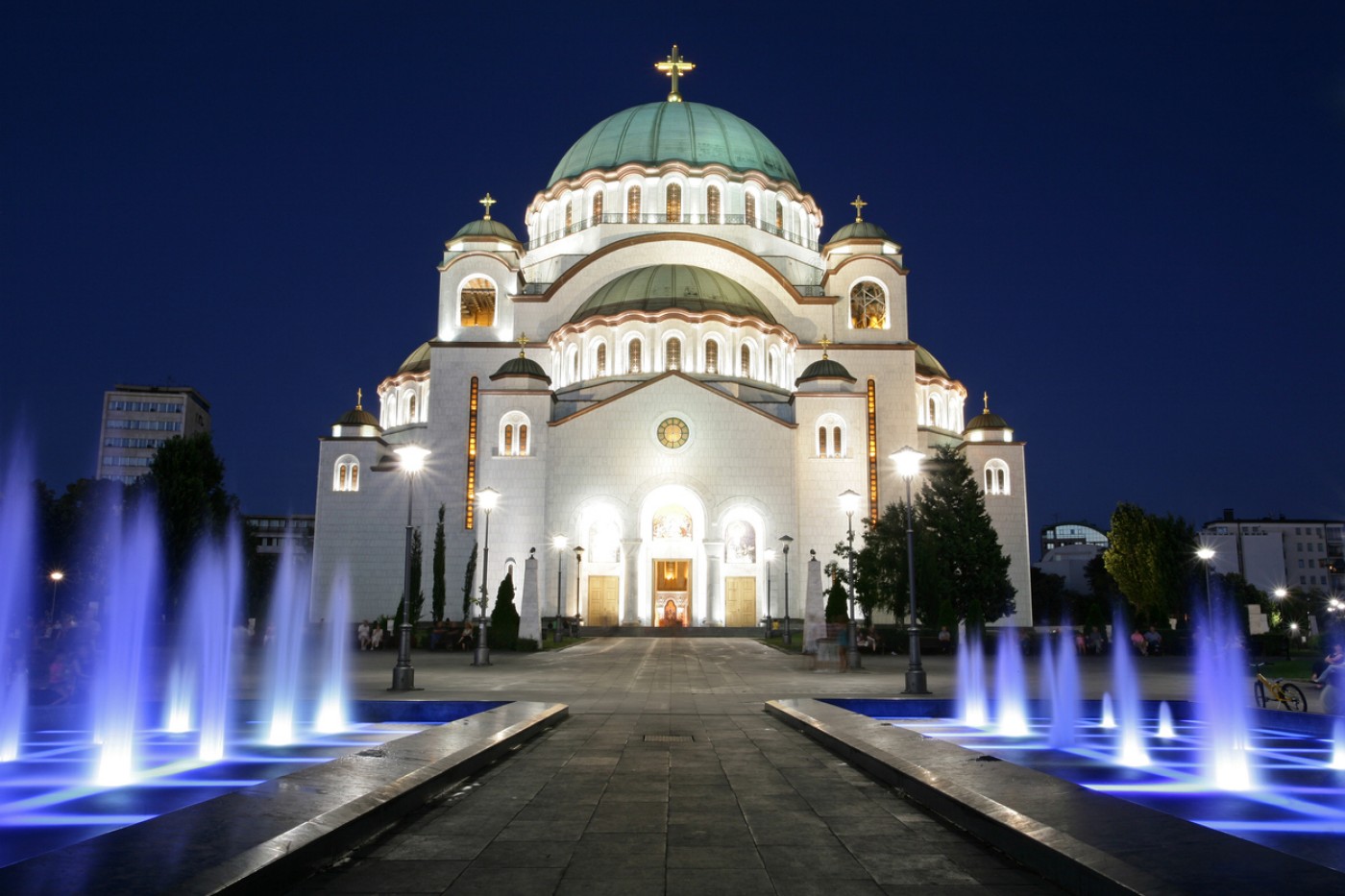
Embrace the vibrancy of Vračar – Belgrade’s trendiest neighborhood
Welcome to Vračar, a neighborhood revered as the epitome of trendiness in Belgrade. Despite its modest size, it boasts an abundance of attractions: stunning architecture, charming shops, cozy cafés, trendy bars, and a myriad of both traditional and contemporary restaurants. Additionally, you’ll discover delightful small galleries showcasing local artistic talent. Your first destination on this adventure should undoubtedly be the Kalenić Farmers’ Market.
Kalenić holds a special place in the hearts of Belgrade residents, as well as those in other Serbian cities. Celebrated as one of the oldest and most significant green markets, it beckons with a cornucopia of fresh, locally-produced delights. From crisp vegetables and succulent fruits to delectable local cheeses and an array of meats – both fresh and cooked – you’ll find a treasure trove to satisfy every palate. Indulge in a flavorful experience before continuing your journey to the nearby Nikola Tesla Museum.
Immerse yourself in the captivating world of Nikola Tesla, one of the most influential scientists in history and a proud Serbian icon. The museum serves as the ultimate destination to unravel the extraordinary life and groundbreaking work of this visionary genius. Embark on a guided tour where you’ll witness demonstrations of Tesla’s most significant inventions while delving into the fascinating details of his life and achievements. It is worth noting that Belgrade International Airport proudly bears the name of this remarkable Serbian scientist – a testament to our immense pride in his legacy.
Choose convenient public transport for your explorations
If your feet are starting to tire from your adventures, fret not! There are excellent public transport options available in Belgrade to help you continue your exploration. Having covered most of the central areas, you may now wish to venture further afield, and the Belgrade tram and bus network will be your trusted companions. Easy to use and navigate, these modes of transportation offer a convenient way to reach destinations that require a bit more time. Affordable tickets can be purchased at newsstands throughout the city, and remember to validate your ticket once you board the bus or tram.
Expand your historical tour with an eclectic twist
If royal history and palaces pique your interest, a visit to the Royal Palace in the affluent southern suburb of Dedinje is highly recommended. This magnificent complex serves as the residence of Serbia’s Crown Prince Alexander and offers guided tours that provide captivating insights into its opulent decoration and regal ambiance (www.royalfamily.org).
For a truly unique experience, why not combine your royal exploration with a dive into Serbia’s communist history? The royal complex is conveniently situated near Tito’s mausoleum and the premises of the Museum of Yugoslavia. Here, you can immerse yourself in a crash course on 20th-century Yugoslav history, gaining valuable insights into a captivating era (www.muzej-jugoslavije.org). If this subject truly captivates your interest, we recommend booking the popular communist tour through (www.belgradewalkingtours.com/explore-belgrade/communist-tour).
Alternatively, if you’re seeking a contrasting yet lively and captivating part of Belgrade, venture across the river to Zemun. As you step into this vibrant neighborhood, you’ll find yourself surrounded by the former lands of the Habsburgs, evident through the elegant baroque architecture that graces the area. Take de light in exploring the opulent green market, strolling along the charming café-lined promenade that runs parallel to the Danube, and discovering the enchanting district of Gardoš. Follow the cobblestone streets that lead you to the iconic Gardoš Tower, offering breathtaking panoramic views from its summit.
Discover the vibrant business district of Novi Beograd
Once your exploration of Zemun comes to a close, and you desire to return to the city center of Belgrade, a pleasant stroll along the riverbank will lead you to Novi Beograd, also known as New Belgrade. This meticulously planned district, whose construction commenced in the early 1950s, has evolved into the bustling business hub of the city and is now experiencing rapid development. Situated on the left bank of the Sava River, with its Northeastern edge touching the right bank of the Danube, just before their confluence, New Belgrade extends westward from ‘Old’ Belgrade and is connected by six bridges.
While in this dynamic district, don’t miss the opportunity to visit the Museum of Contemporary Art (www.msub.org.rs), especially if you have an affinity for contemporary art. The museum building itself is an intriguing example of modern museum architecture and is surrounded by a park adorned with sculptures crafted by the most influential Yugoslav sculptors of the 20th century. Inside, the museum’s collection represents the works of significant artists, pivotal periods, notable movements, and influential tendencies in Yugoslav, Serbian, and international art throughout the 20th century.
Novi Beograd offers a unique blend of modernity and artistic expression, providing a captivating contrast to the historic charm found in other parts of Belgrade.
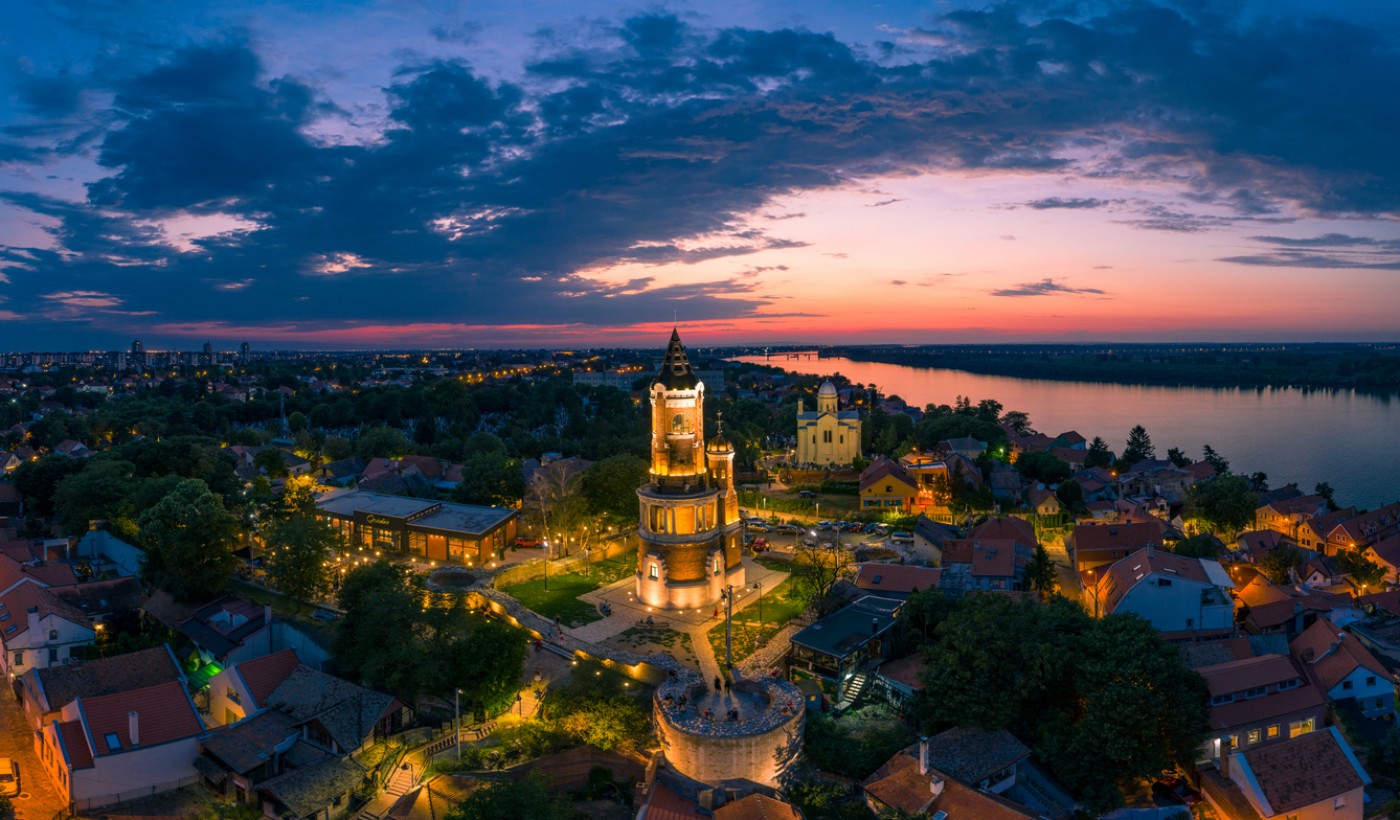
This would wrap up your two-day visit to Belgrade, but if you have additional time, there are more options to consider. Embark on a day trip to Novi Sad, Serbia’s second-largest city, which is easily accessible by bus or train in under half an hour. Another possibility is to delve into the distant neighborhoods of Belgrade, discovering their unique history and cultural heritage. For further inspiration, visit the Tourist Information Center website (www.tob.rs).
Related News
Be the first
Subscribe to Raiffeisen Insights. Get an e-mail with
the latest trends in the world of economics and business.